Five Tape Emulation Plug-ins to Look Out For in 2022
Form a band online, promote your music, buy custom beats, sound parts, and share your Beat or Track as a Royalty Free loop with us. Collaborate to make beats online with the best loop makers from around the world on the Forum for musicians and beat makers. Keep up to date with Music News and learn from FL Studio Video Tutorials and the articles on the Blog. Free DAW Music Software downloads, VST and Instrument Packs for FL Studio, Pro Tools, Logic, Ableton, and how to use the most popular free DAW Software, Fruity Loop Plugins, MIDIs and more.
Five Tape Emulation Plug-ins to Look Out For in 2022
Few things capture our nostalgia like the sound of musical instruments being recorded into and played back through tape machines. In the seemingly everlasting search for clean, linear methods of recording and playing back audio in the early 20th century, tape machines quickly became a viable alternative to vinyl recordings, in the 1920’s. Multi-track recorders were perfected in 1943, by the AEG Corporation in Germany, and they created around two hundred and fifty recordings in stereo (two-track) in this period. This technology, however, was guarded very closely till the end of World War II. After the war, Ampex became the pioneers of stereo recording in the USA, and multitrack recordings had cemented themselves as the new norm in the recording industry.
Musical innovators and pioneers soon realised that they wanted more than two tracks to record on, so they could write denser musical arrangements for their work. Ampex and Les Paul released the first eight-track machine in the 1950’s. Over the next few decades, stereo became the norrm for listening formats as well, and quadraphonic recordings (like Pink Floyd’s ‘Dark Side of the Moon’) began to emerge as well. While stereo is still by far the most conventional playback and listening format, digital, computer-based recordings have the capability to produce tracks in as many output formats as one can imagine. Dolby Atmos, in 2021, is being implemented fairly heavily nowadays.
The perfect linearity, portability, and affordability of digital systems has eliminated the need for tape as a recording medium, but digital recordings often, if not always, lacks the richness and sonic density recordings conducted on tape, and the need arose for software companies to code plug-ins that emulate classic or modern tape machines, and even create unique sounding tape machine models. This article will explore a few notable plug-ins, which vary in flexibility, feature sets and price.
1. Baby Audio TAIP
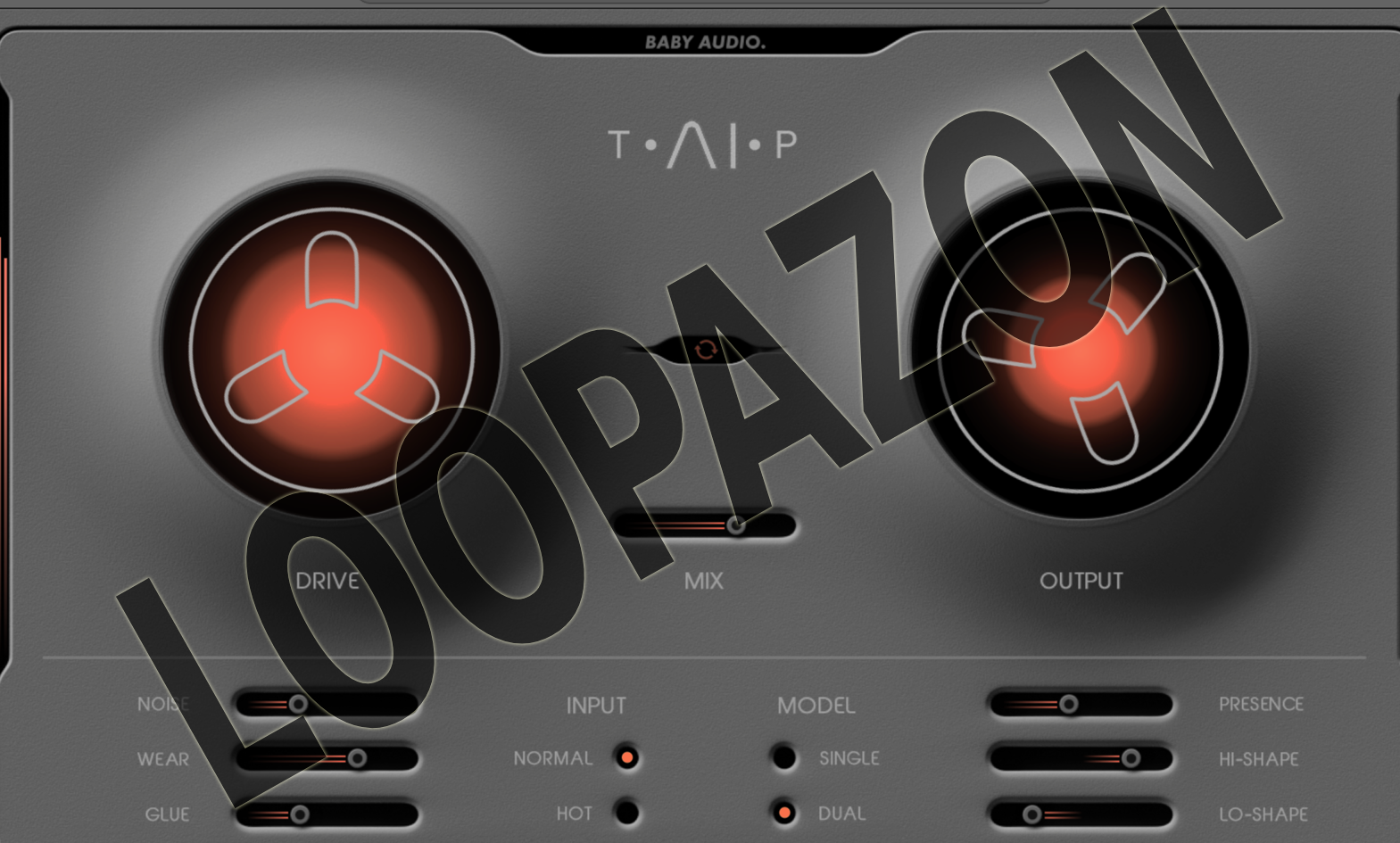
Let’s start this off list with an ‘original’ design. Baby Audio has taken a very unique approach to designing this tape emulation plug-in. Instead of coding the software traditionally and making informed estimations, artificial intelligence and neural networks were fed a variety of recordings, both dry, as well as processed to various extents through tape machines. These differences were then learned by the AI, and this data is applied to new audio in the form of this processing unit.
The design of this unit is also fairly unique and modern, and this plug-in boasts a moderately extensive feature set. The Drive control determines the amount of audio signal going into the unit, and varies the amount of tape saturation applied to the signal. It is also automatically gain-compensated, and the feature can be activated or deactivated by the switch between the two ‘heads’. You have the option to introduce varying amounts of noise, wow and flutter (Wear), and glue compression (controllable, so you can use this unit as a pure saturator). Normal and hot input modes determines the base level of signal that goes into the processor, and a Dual mode emulates two machines running in series, to add some more weight to the signal, while maintaining the fidelity of the signal a little better. You can even choose to apply more or less saturation to high and low frequencies with the Shape controls, maintain or roll off the presence, and use the Mix knob to blend in suitable amounts of the unprocessed signal as well. Mix, when combined with the wear control, can turn the processor into a tape flanger unit. The unit also comes with over a hundred presets for various applications.
TAIP is priced at $69, and is available in multiple formats for Windows and Mac.
2. Kiive Audio Tape Face
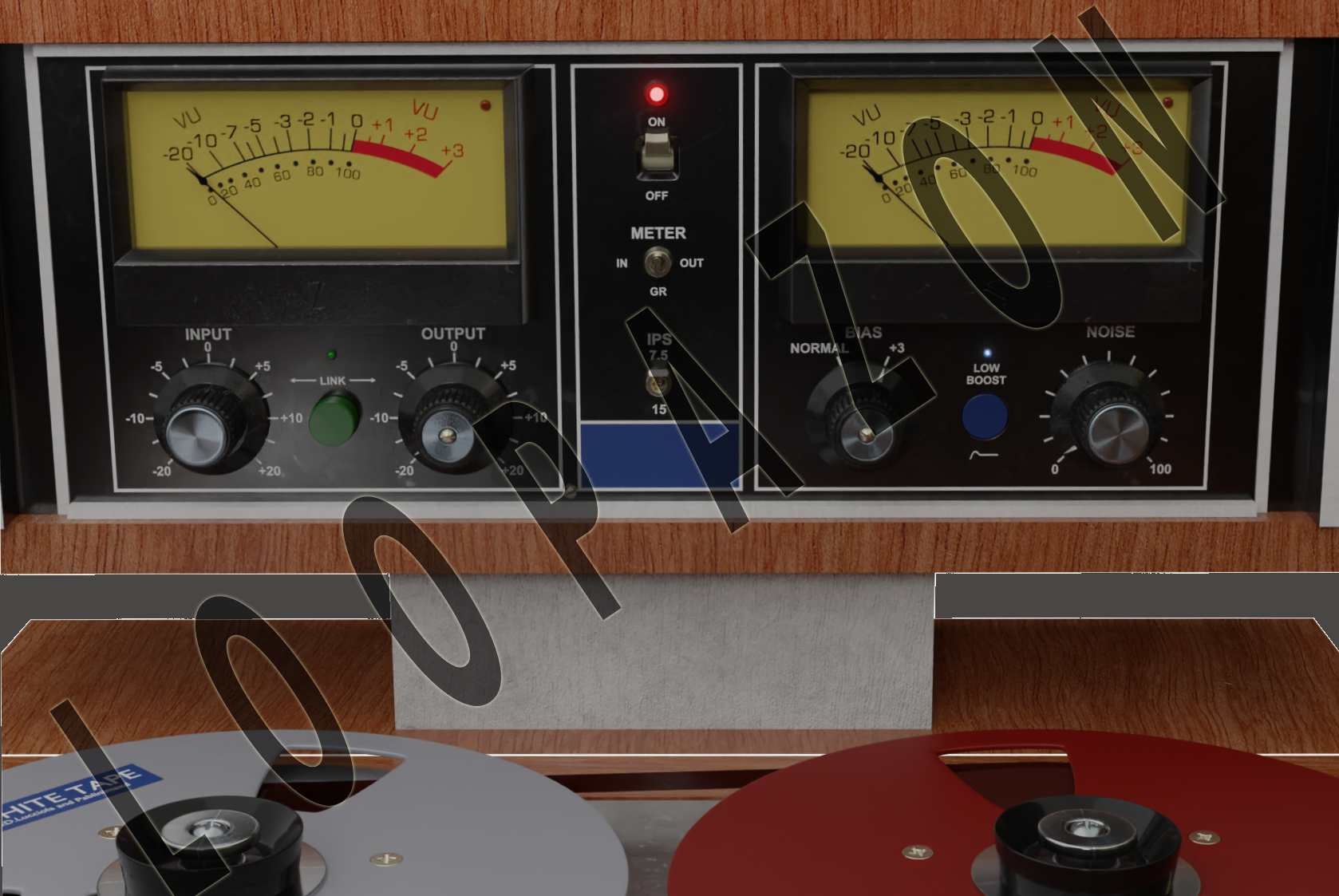
Kiive Audio released this beautiful sounding and relatively affordable tape machine emulation in 2021, to mimic the sound of a classic German tape machine. The interface looks more like a traditional tape machine than TAIP, and has a smaller feature set.
The input control determines the level of the input signal going into the processor. This control can be used to add subtle saturation, or full-blown harmonic distortion. It has can be linked to the output control for automatic gain compensation as well. The tape speeds can be toggled between 7.5 and 15 Inches Per Second (IPS), and the bias of the machine can be controlled as well. Cranking the bias of the unit warms up the signal by emphasising low mids, and saturates the signal more easily. The low boost button can engage a low frequency boost, to make up for the frequencies lost while pushing the input signal, and the noise control allows you to add tape noise to the signal. The plug-in also features an 8x oversampling option and a mix control to use the effect in parallel.
Priced at $79, this plug-in is available in various formats for Windows and Mac.
3. Overloud GEM Tapedesk
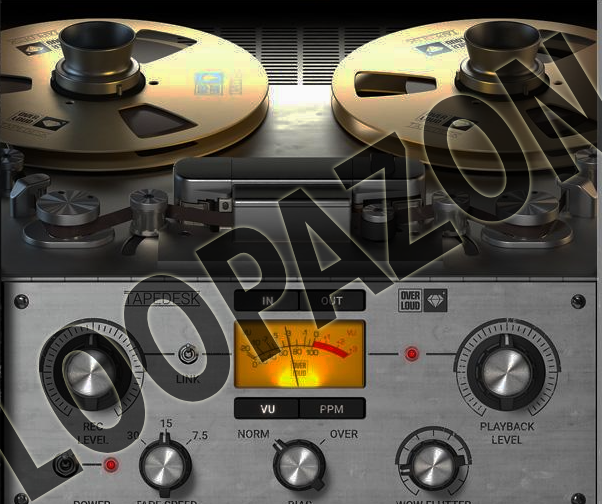
Overloud GEM Tapedesk is another very unique approach to a tape plug-in. Tape machines have historically always been used in conjunction with tracking and mixing consoles. Overloud decided to emulate the saturation stages of three consoles along with a carefully modelled tape machine emulation section. Along with the standard tape machine controls on offer, the record and playback level controls can be linked to provide automatic gain compensation. There are three selectable tape speed settings, namely 30, 15, and 7.5 IPS. The ‘special ingredient’ of this plug-in, however, is how the console transformer saturation and tape distortion and soft knee compression interact and react with each other. The default console for this plug-in is the S4000, which features characteristically aggressive mids and controlled lows, great for rock and metal. The N80 emulation boasts a much more HiFi quality, along with pleasantly saturated low end. Finally, the T88 emulation sounds fat and LoFi, with a lot of mid punch and what sounds like a gentle high roll-off, or high shelf cut.
Tapedesk
is priced at $179, and is available in multiple formats for Windows
and Mac.
4. Chowdhury DSP Chow Tape Model
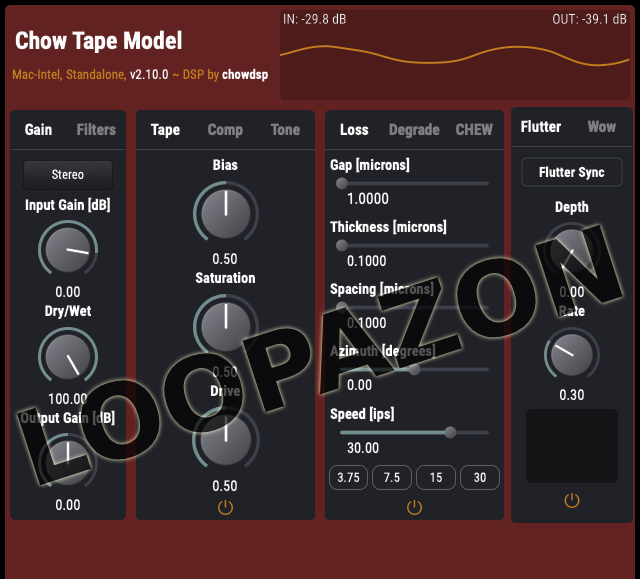
Perhaps the most fully-featured plug-in on this list, the ChowDSP Chow Tape Model also happens to be the most affordable, since it is available free of charge. Jatin Chowdhury set out to code this plug-in as part of a project at Stanford University, to emulate the Sony TC-260 tape machine, but has, since, expanded its capabilities to sound extremely versatile and useful in a whole bunch of ways. The feature set on this plug-in is almost overwhelming, but its default layout is simple to understand, and all the advanced controls lie either to the right side of the plug-in, or in the sub windows of each section. We have complete control over how lossy the audio sounds, how it gets compressed, the tonal characteristics of the plug-in, as well as having the option to filter out low and high frequencies from the sidechain input, without affecting the primary signal. Wow and flutter can each be controlled separately, and modulation rates may or may not be synced to the host tempo. The plug-in is also groupable, features selectable hysteresis modes and multiple oversampling options.
Chow Tape Model is available for free in multiple formats for Windows and Mac.
5. Toneboosters Reelbus
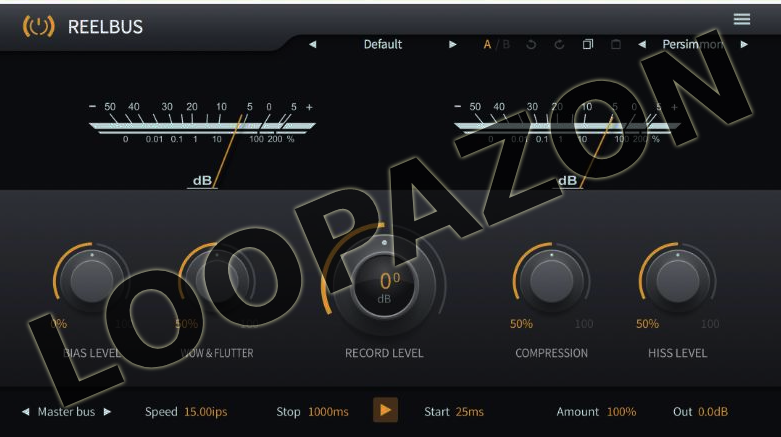
Reelbus is another plug-in that boasts a massive feature set, but is laid out in a very simple, lucid manner. Advanced windows are accessible through a menu on the bottom left, but the plug-in opens up in the ‘Master bus’ mode (its simplest mode) by default. Along with a host of controls that change asperity, hysteresis and various kinds of degradation, saturation and compression, Reelbus can be used as a tape echo as well as a tape flanger effect. It also has a very useful and convenient tape stop/start section, where the start and stop times can be customised to suit your productions. The wealth of features merits an article of its own, and is best understood and deciphered on the job, by running audio through the free demo, and tweaking controls, either from scratch, or through presets that may also be tweaked.
Reelbus is available for €29, in multiple formats for Windows and Mac.
FAQ
No FAQ found
